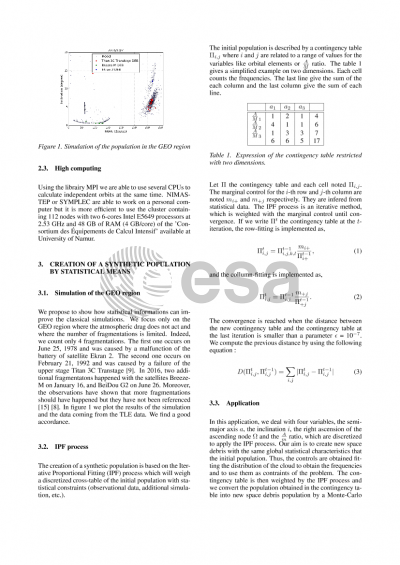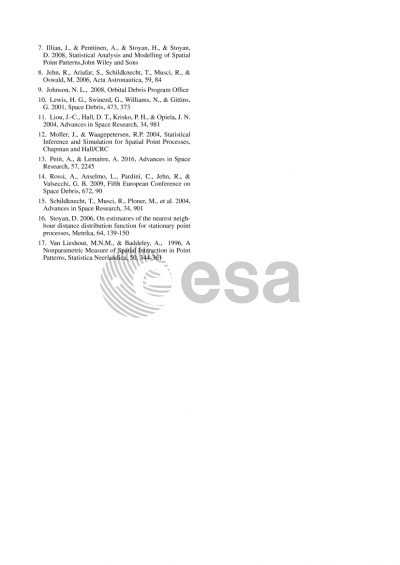Document details

Abstract
Since the beginning of the space era more than 200 fragmentations events (explosions or collisions) occurred in orbit around the Earth. These fragmentation events constitute the main source of debris with a size greater than 1 cm. Moreover, approximatively 12,000 debris with a size greater than 10 cm in LEO region and 1 m in GEO region are observed, identified and tracked on a regular basis. There exists also a huge number of space debris (estimated to 800,000 objects), whose size is between 1 cm and 10 cm, which remains invisible from the ground because they are too small but have a high kinetic energy. They highly increase the risk and cost of all space missions.
The NASA breakup model is the main reference to generate a cloud of space debris from a spacecraft fragmentation or an upper-stage. This model is included in several space debris population models such as SDM, MASTER or LEGEND. For a better accordance with the radar observations, the NASA breakup model is based on a power law given a characteristic size for debris generated; Two log-normal laws are also used to determine the A/m ratio or the velocity increment of each fragment. Then, considering the evolution of spacecraft structures, it is interesting to investigate the accordance of these characteristics with observational data, like Two Line Elements (TLE) data sets.
The area-to-mass ratio (A/m) is one of the main parameters driving the lifetime of each space debris. We developed an approach to systematically calibrate the ballistic coefficient (BC = Cd A/m) for all TLE objects affected by the atmospheric drag. An on-line database allows the scientific community to extract statistical information and use it to constrain fragmentation models. Thus, it is a way to constrain breakup models that are used to generate synthetic populations supposed to be realistic enough to derive the same statistical properties as the real space debris population.
In this work, we present three different ways to create and analyze a space debris population with examples within the LEO and GEO regions. The first method, and the most classical one, consists in using the above-mentioned models, and making comparisons between the results. The second method consists in using statistical tools, originally designed for applied mathematics, on the created population;The goal is to extract some global properties like a tendency to attraction or repulsion between the space debris of the population. This kind of study can give informations on the underlying process, or may detect unexpected events like an unknown fragmentation. Finally, the third method, consists in using the statistical distribution obtained by the simulation and new observational data to constrain a synthetic population of space debris using an Iterative Proportional Fitting (IPF) process.
Preview






